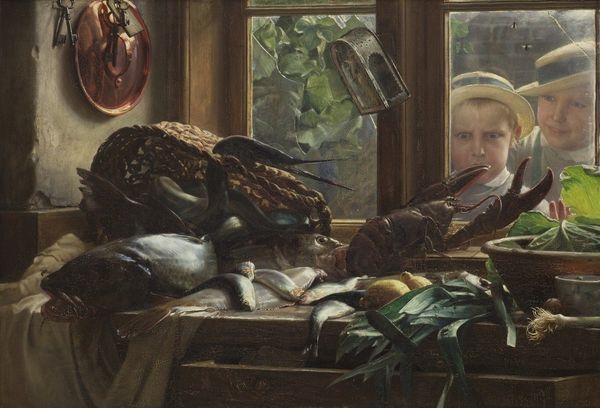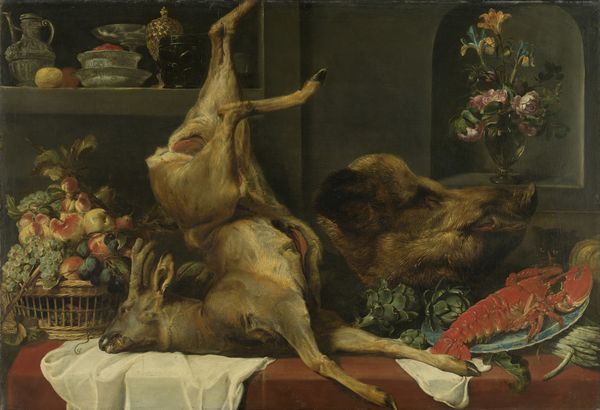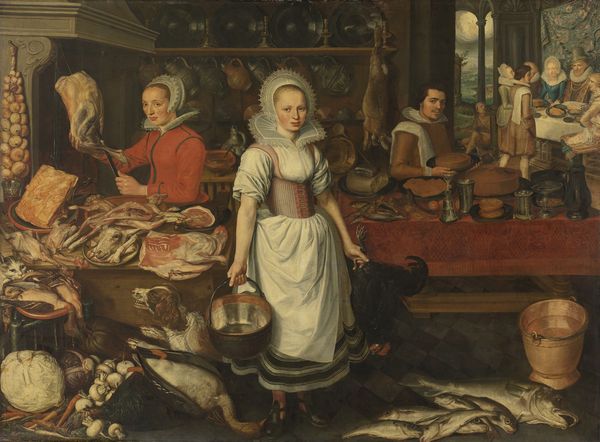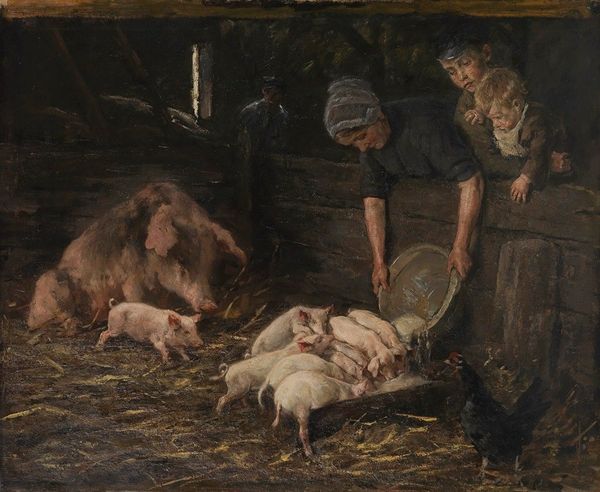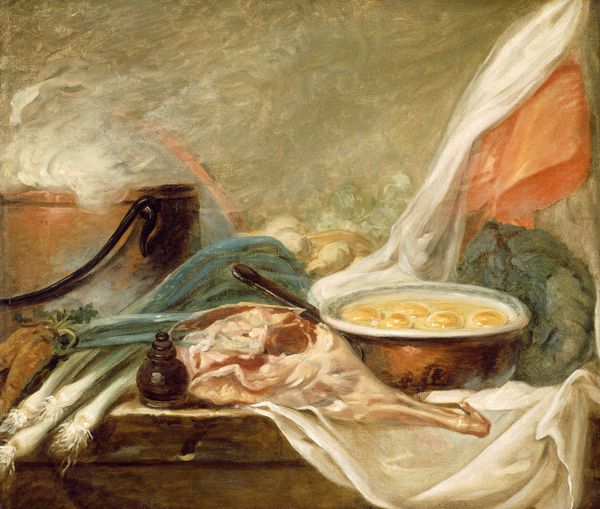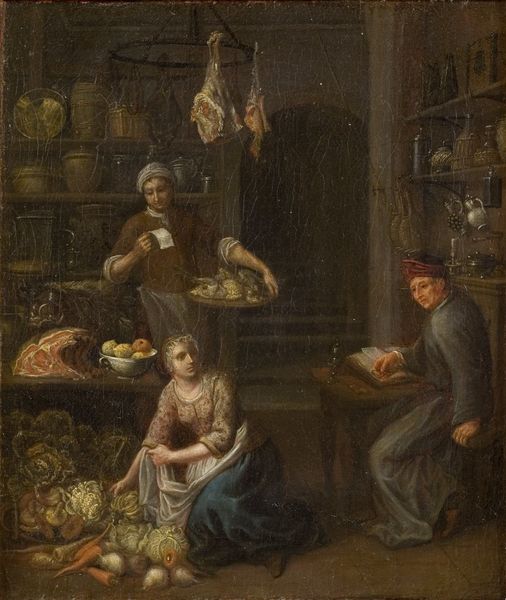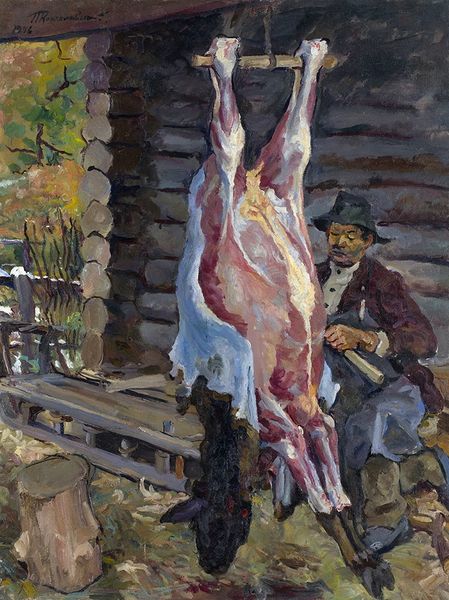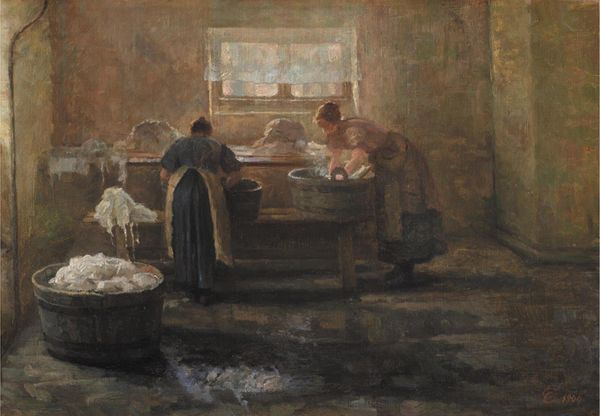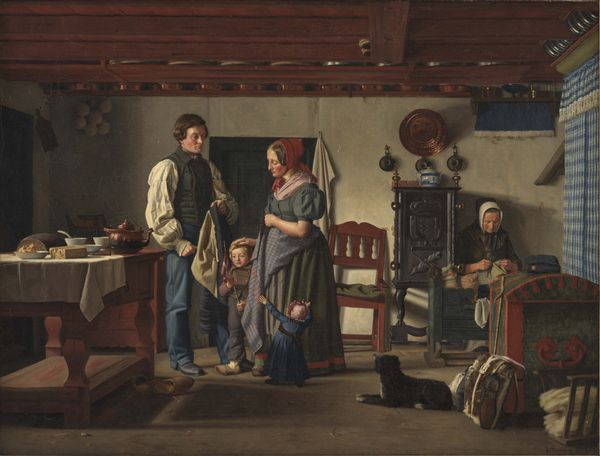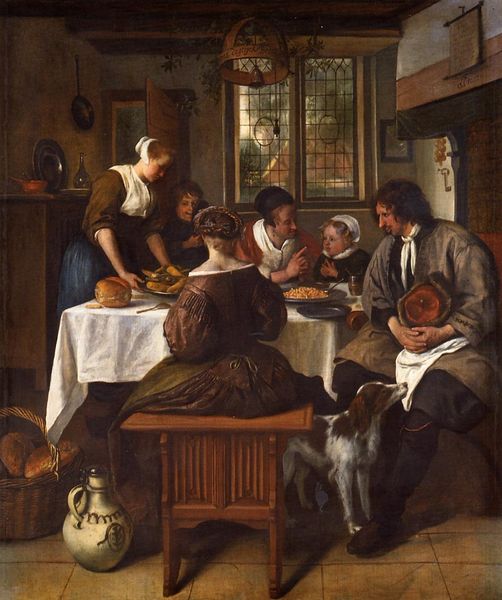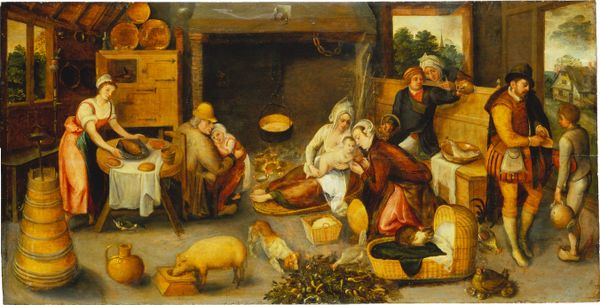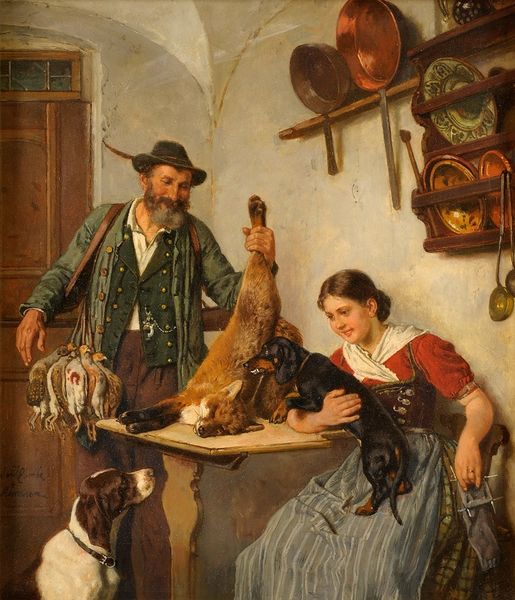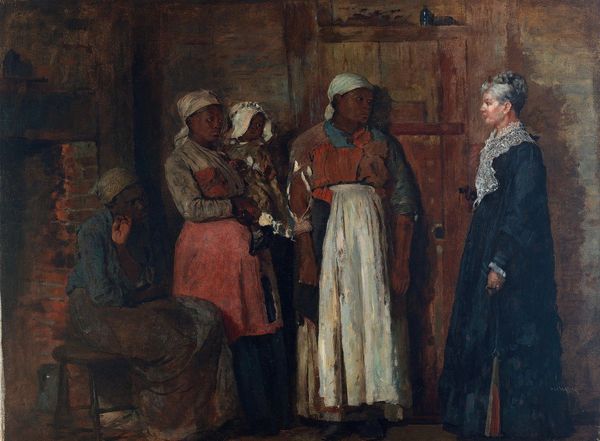
Copyright: Public domain
Ivan Mrkviсka painted "Baker" with oil on canvas. The scene depicts a slice of everyday life, but it also opens a window onto the socio-economic realities of the time and place in which it was made. Looking at the visual codes, we see a clear division of labor and social roles. The baker, identifiable by his traditional attire, sits at the counter, seemingly in charge. A woman, perhaps a vendor, carries goods on her head, while a child stands in the foreground, holding a bowl. The setting appears to be a bustling marketplace, a hub of economic activity and social exchange. The architecture and clothing suggest that this scene may be set in the Balkans during the late 19th or early 20th century. Understanding "Baker" requires delving into the social history of the Balkans during this period. What were the prevailing economic conditions? What was the role of women in society? How did traditional crafts and trades intersect with modernization? Researching these questions through historical documents, photographs, and oral histories can provide valuable insights into the painting's meaning. It becomes clear that art is always contingent on social and institutional context.
Comments
No comments
Be the first to comment and join the conversation on the ultimate creative platform.
